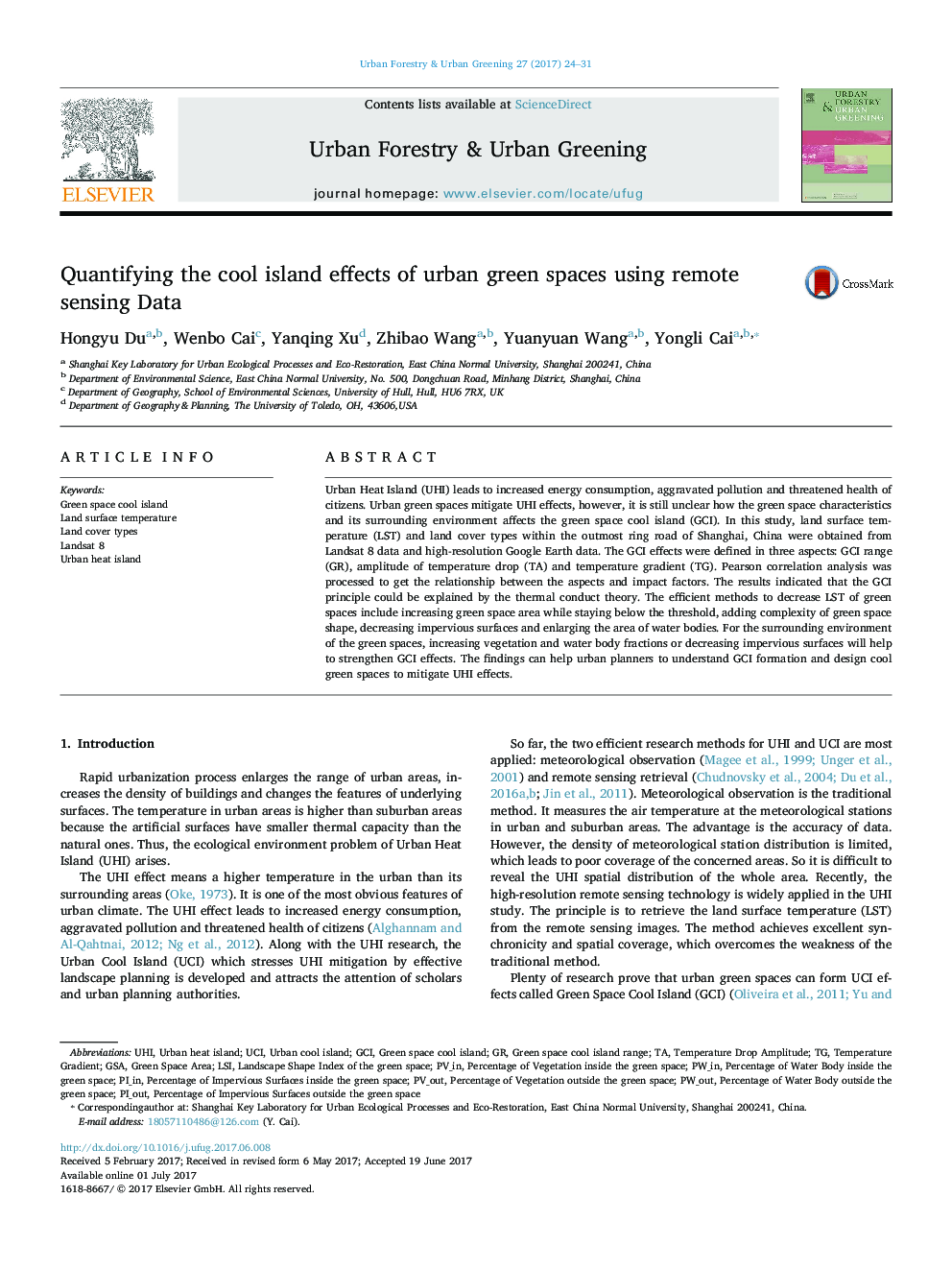| Article ID | Journal | Published Year | Pages | File Type |
|---|---|---|---|---|
| 6461694 | Urban Forestry & Urban Greening | 2017 | 8 Pages |
Urban Heat Island (UHI) leads to increased energy consumption, aggravated pollution and threatened health of citizens. Urban green spaces mitigate UHI effects, however, it is still unclear how the green space characteristics and its surrounding environment affects the green space cool island (GCI). In this study, land surface temperature (LST) and land cover types within the outmost ring road of Shanghai, China were obtained from Landsat 8 data and high-resolution Google Earth data. The GCI effects were defined in three aspects: GCI range (GR), amplitude of temperature drop (TA) and temperature gradient (TG). Pearson correlation analysis was processed to get the relationship between the aspects and impact factors. The results indicated that the GCI principle could be explained by the thermal conduct theory. The efficient methods to decrease LST of green spaces include increasing green space area while staying below the threshold, adding complexity of green space shape, decreasing impervious surfaces and enlarging the area of water bodies. For the surrounding environment of the green spaces, increasing vegetation and water body fractions or decreasing impervious surfaces will help to strengthen GCI effects. The findings can help urban planners to understand GCI formation and design cool green spaces to mitigate UHI effects.
